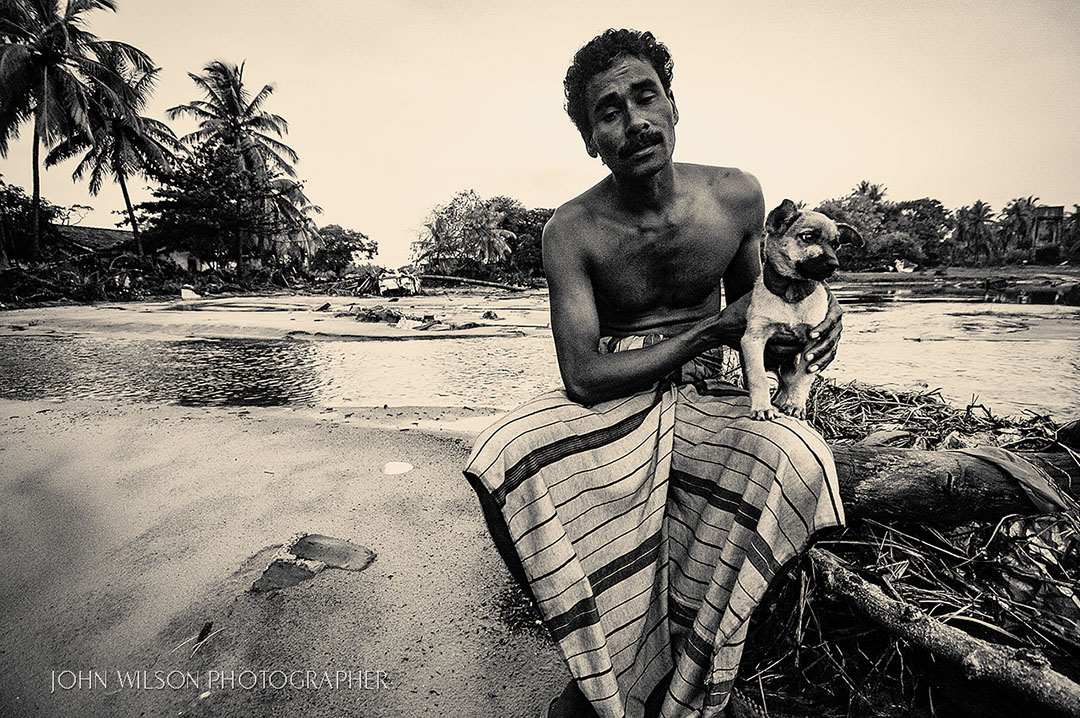
Sri Lanka Tsunami - Journey to Aragum Bay - Trials and tribulations of reporting from a disaster zone.
By John Wilson - Australian Photojournalist
The Asian Tsunami was one of the largest natural disasters in modern history which occurred on Boxing Day 2004. When I arrived in Sri Lanka, 48 hours after the disaster, I was the only Australian photojournalist in the disaster zone and I was shocked at the extent of environmental damage and human tragedy before me.
It seemed like the entire coastline had been turned into a massive junkyard, everything was in confusion and chaos as far as the eye could see. Just to the south of the capital Colombo no roadways were visible, just an endless landscape of mangled timber and metal and survivors wandering around looking for their belongings and loved ones. Working in these conditions is extremely difficult mentally, emotionally and physically.
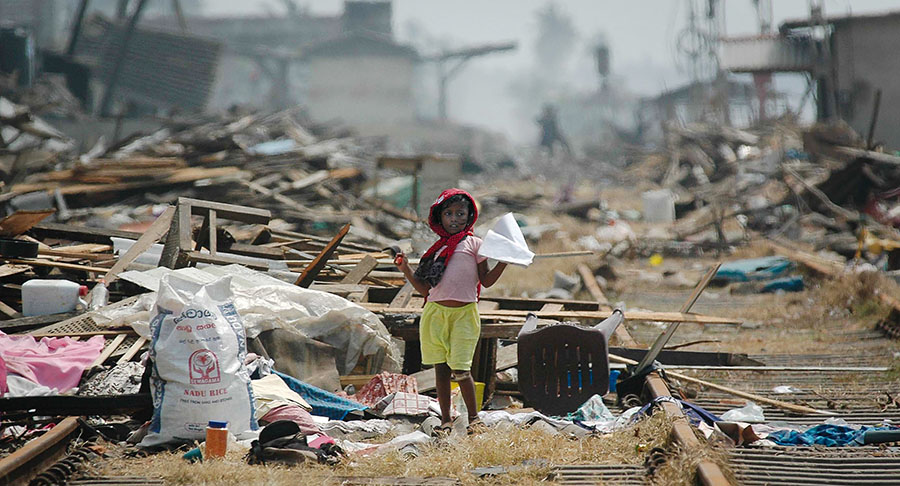
Where to start - Houses and infrastructure destroyed.
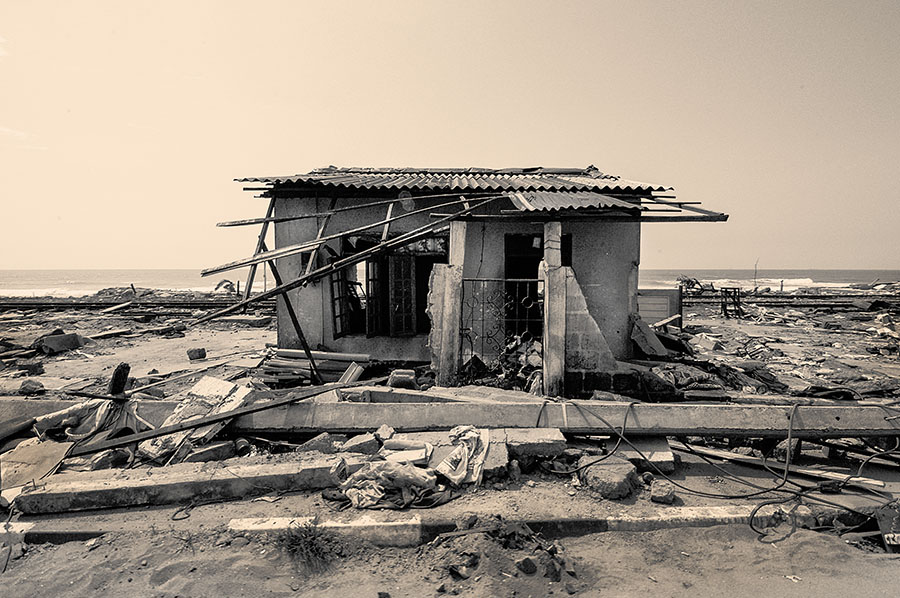
Swept away. The tsunami laid waste to huge swathes of the Sri Lankan coastline leaving the odd reminder of the communities that lived there.

A view of destruction. The Tsunami smashed its way through entire communities.
Getting access to the worst affected areas on the east coast was my key goal and I ended up traveling 330km in a dilapidated minivan in rainy conditions over washed out and traffic packed roads, with News Limited journalist Michael McKenna.
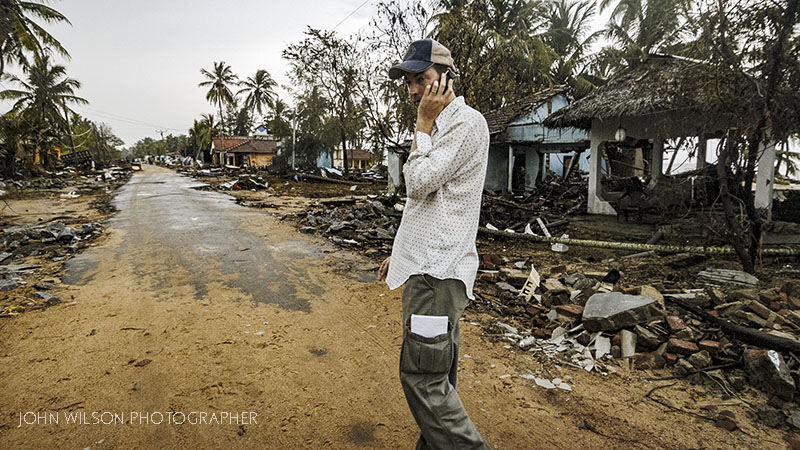
Poor connection. Australian Journalist Michael McKenna experiences the damaged phone network.
We traveled to the eastern side of the Island in response to community reports that entire communities had been wiped out and had gone unreported in the press. After a tortuous drive of 18 hours on narrow rural roads jammed with traffic that began in the very early hours of the morning, we finally arrived on the outskirts of the seaside village of Pottuvil late in the evening. We drove through a village mostly in ruins heading for a neighboring village that had been totally isolated by flooding seawater. The few higher areas around the township that suffered less from the seas surging force were being used to accommodate survivors and staging points for emergency equipment and supplies. As rain fell from a grey gloomy sky we found our way to the edge of a large coastal inlet and hitched a ride across to Aragum Bay in one of the few remaining boats ferrying survivors back and forth between the villages. We piled into the small open vessel with our gear and local people wanting to find family members. Our "sardine can" boat motored slowly across the murky waters of the swollen inlet to a sandy landing at Aragum Bay. As we walked away from the boat along a sandy trail towards the township we were once again confronted with the "junkyard" vista of collapsed structures and the skeletal remains of buildings with people wandering aimlessly looking for loved ones. We managed to find a ramshackle place to stay for the night that had only partly been destroyed with candlelight the only illumination available and our bottled water the only freshwater available.

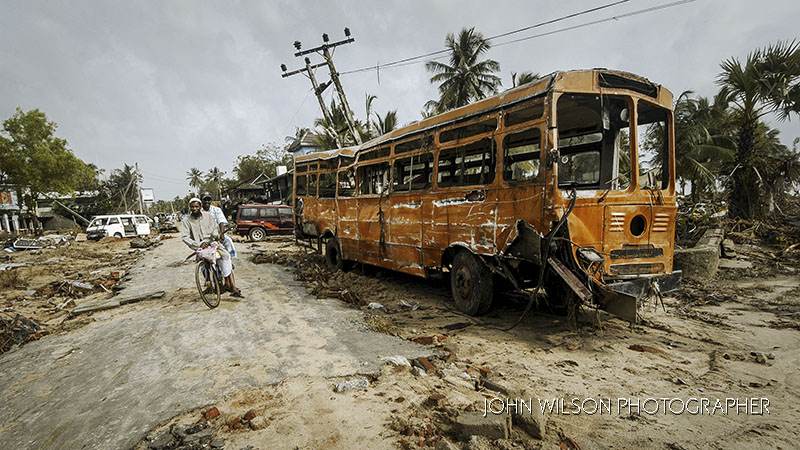
Bus stopped. Anything man-made succumbed to the power of the surging sea.

The lifeline to Aragum Bay

Shelter. Makeshift accommodation gradually made it to the worst affected areas.
As we walked through rubble and destruction we began to hear of incredible stories of survival and tragedy. One man described how he was caught by surprise as the sea engulfed the coastline and with nowhere to go he managed to climb to the top of a coconut tree and watched his village and residents washed away. Another man (main picture) described how he had been washed a kilometre inland, almost succumbing to the incredible force of the water and pummeling by debris. Trying to stay composed, he told us that his family had perished and all he could find of his family was a small pup that had somehow survived the incredible force of the tsunami.

Inconsolable grief of family members lost.
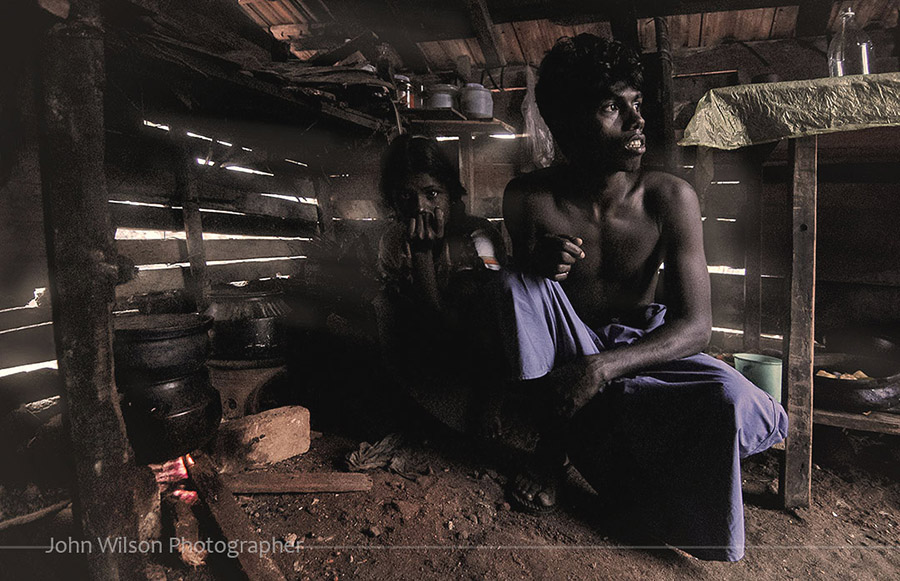
Tough times ahead. Makeshift living conditions for tsunami survivors.
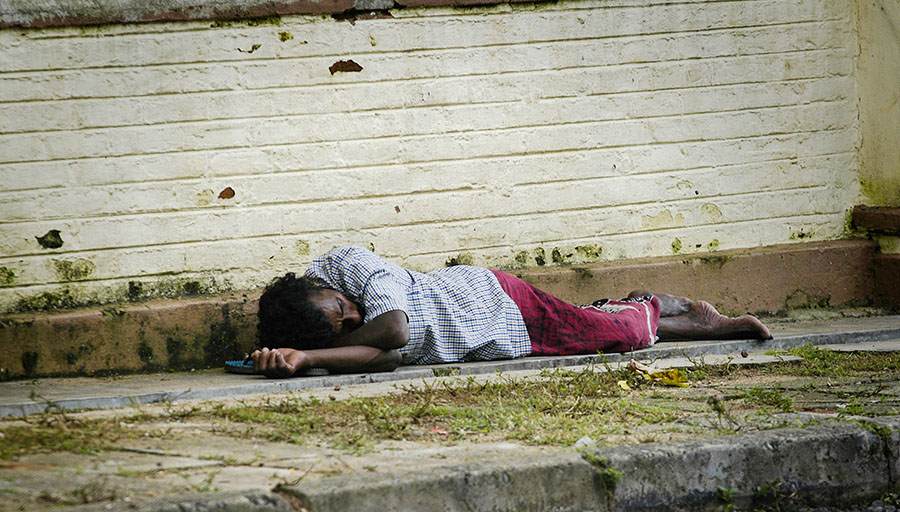
Exhausted. With no home to go to, sleeping on a footpath was the only option for this survivor.
Reporting from a disaster zone
There is all manner of concerns photojournalists face when reporting from a disaster zone. How to get to into an area, how to get back out, dangerous conditions and safety concerns (fallen power lines, contaminated water, etc, etc), difficult weather conditions, how to communicate with the editor a world away, how to keep gear operational, how to feed yourself, where to sleep (if you get any sleep). I can go on and all the time there is the pressure of getting pictures to illustrate the story with limited time and wishing and hoping that you can actually transmit your images back to the magazine or newspaper.
My biggest concern professionally was being able to get my images back to the papers I was working for, so this untold story of devastation could get out to the world. I had satellite equipment but the heavy rainy skies prevented a strong enough signal for transmission. I was facing a real dilemma. With no services left in the area, it was going to take at least a day or so to drive all the way back to the capital Colombo to get my images. We continued to work traveling back across the lagoon to the neighboring village of Pottuvil to meet a man that had lost more than twenty members of his family. We arrived to find the man at a relative's house which had been spared from the devastation. The sadness and grief were palpable but we were welcomed into the house and the man, fighting to retain composure, explained his incredible loss. Reporting in these circumstances is tough. You must respect people and have empathy but also stay focused on the job at hand to document a story. Empathy and human connection play a vital role in reporting not only having technical camera skills.
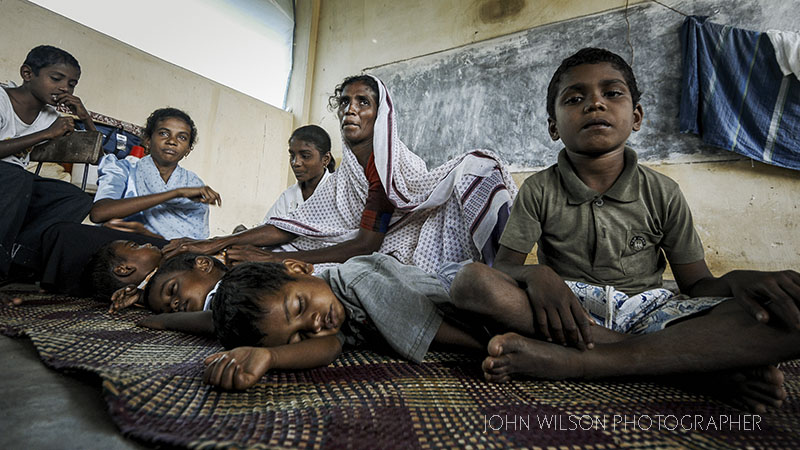
A family of survivors takes shelter in a community building on high ground on the outskirts of Pottuvil.
Journalist Michael McKenna had been speaking to the man and relatives in the house and listening to their stories when I decided to go and collect some more equipment I had left outside. I walked along a narrow hallway and passed by a room with some people huddled around a computer screen. To my disbelief, this house was the only home on in the area to have an intact phone line connection that could connect to the internet. My hopes rose as I knew we now had a chance to get our pictures and story out to the waiting world. Michael McKenna was the first to see if he could send his story back to head office in Australia and we both had a sigh of relief when the email disappeared into the sent folder on the computer. Next, it was my turn. I had already edited some photos and had them ready on a memory card and ready to send as email attachments. I quickly made a series of emails for each image as sending multiple image attachments in one email may not be successful in these circumstances. With a dimly lit room full of eyes all peering over my shoulder we watched as I pushed the send button for the first email and it slowly began to send my first image. The network was very slow due to the damage and incredible traffic on the depleted network. We all watched anxiously as the message progress bar built, slowly sending the data back to Australia. I felt a great relief as the first image had been sent successfully and about half an hour later my final image had been sent. We had done it!
My 30kg kit for this assignment included:
- 2x Nikon D2x cameras
- Nikon 80-200mm f2.8 zoom lens
- Nikon 400mm f5.6 ais telephoto lens
- Nikon 180mm f2.8 telephoto lens
- Nikon 18mm f2.8 wide angle lens
- Nikon 24-70 f2.8 zoom lens
- Nikon 85mm f1.4 lens
- Nikon 105mm f1.8 ais telephoto lens
- Nikon 1.4x converter for the 400mm lens
- Manfrotto monopod
- 2 Nikon flash units
- Small translucent umbrella
- Domke F1x camera bag
- Lowepro backpack
- Photo vest
- Sony laptop
- BGAN Satellite transmitter terminal
- Pack of garbage bags to keep gear dry or store wet clothes while traveling.
For clothing on an assignment like this, I generally take one pair of hiking shorts and one pair of long lightweight trousers, lightweight long sleeve shirt and 3-4 tee shirts and - a heap of underwear! Believe me, you don't want to be caught out with serious rashes from perspiration and the like because you don't have extra underwear, pack heaps :). I generally pack a pair of light hiking shoes and sandals such as TEVA sandals.

Hello Tanya, thanks for commenting :) Yes, I do occasional talks to interested groups about my international work. Happy to talk via email or phone when you wish. Cheers,
John
Terms & Conditions
Subscribe
Report
My comments